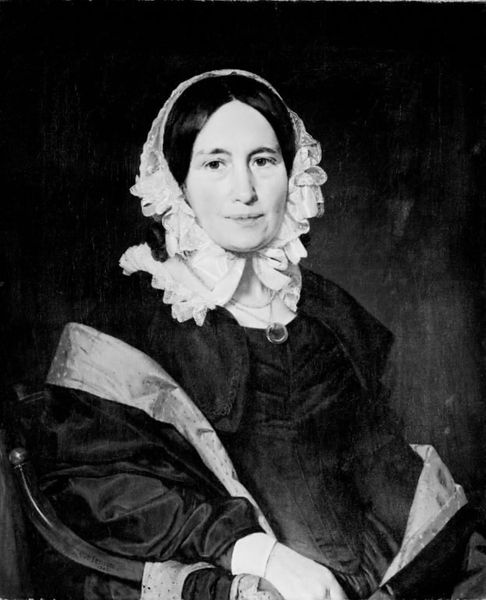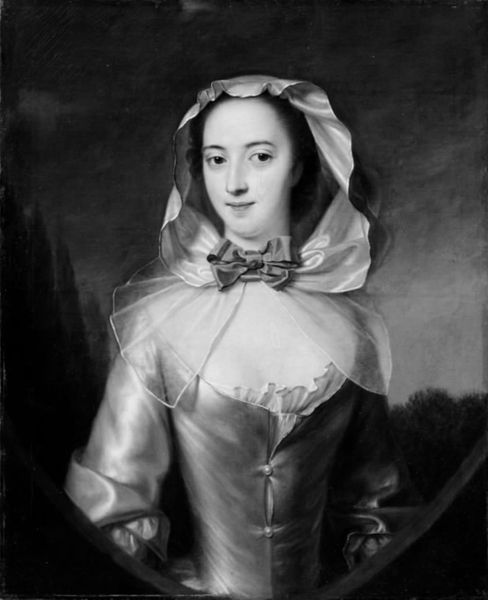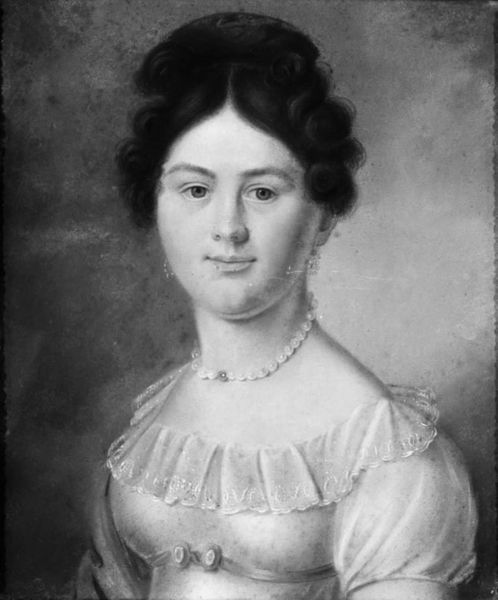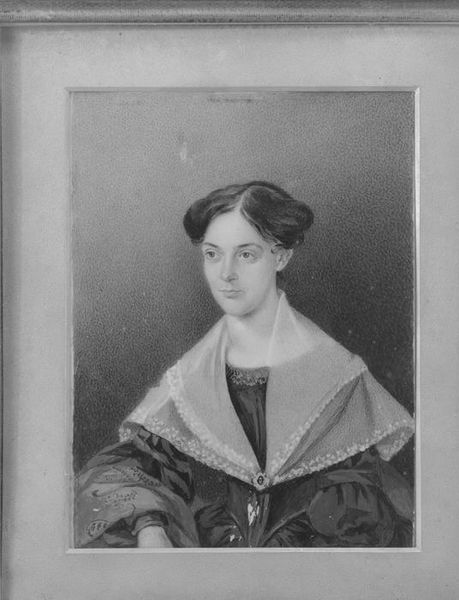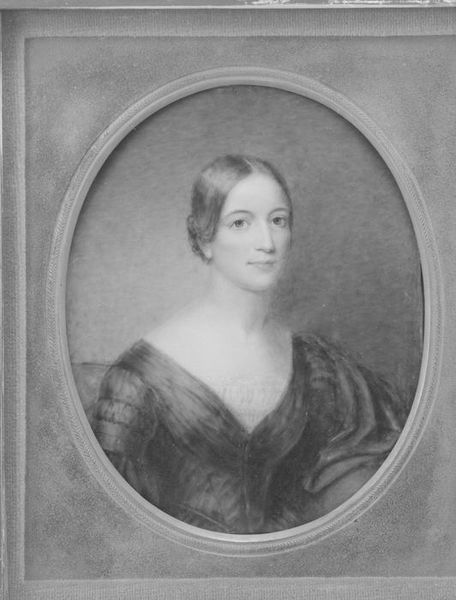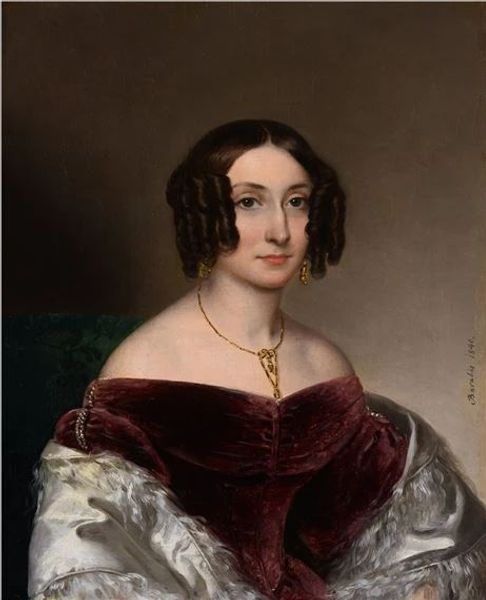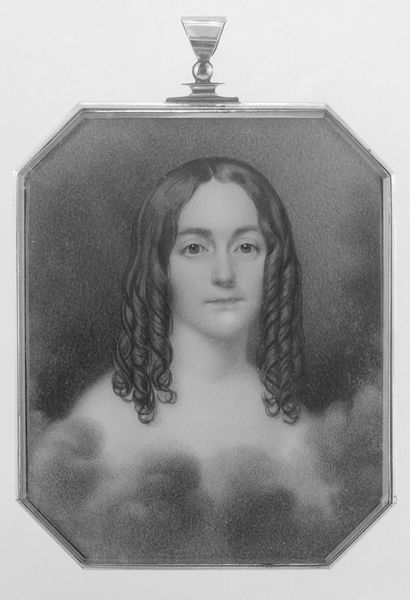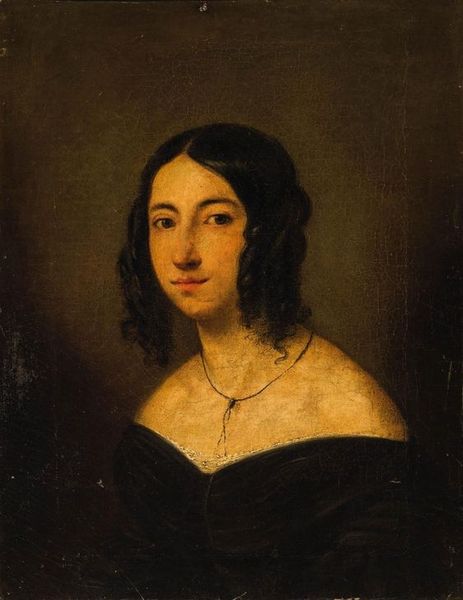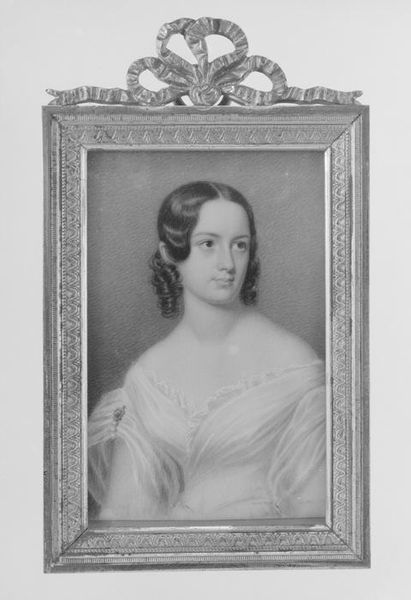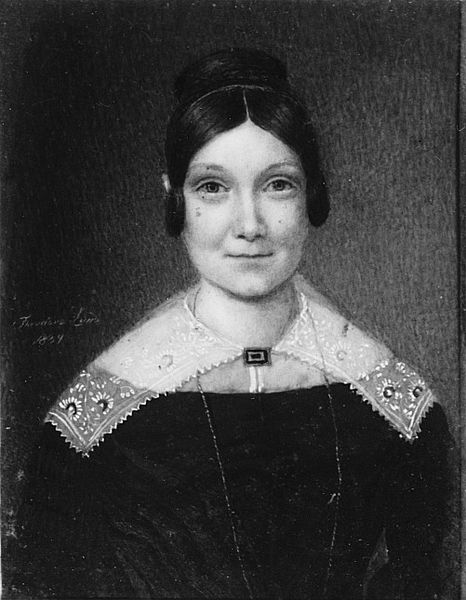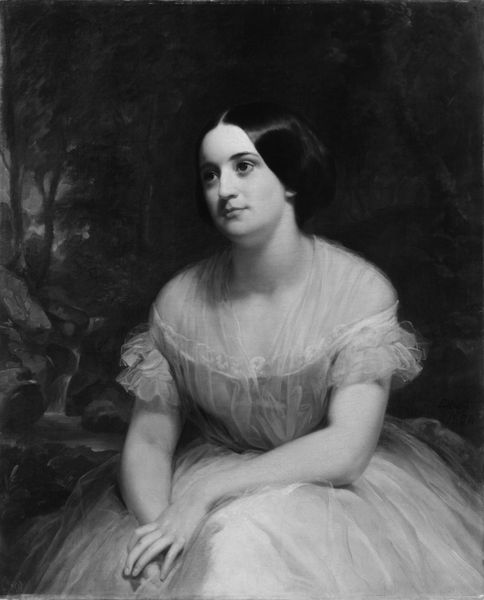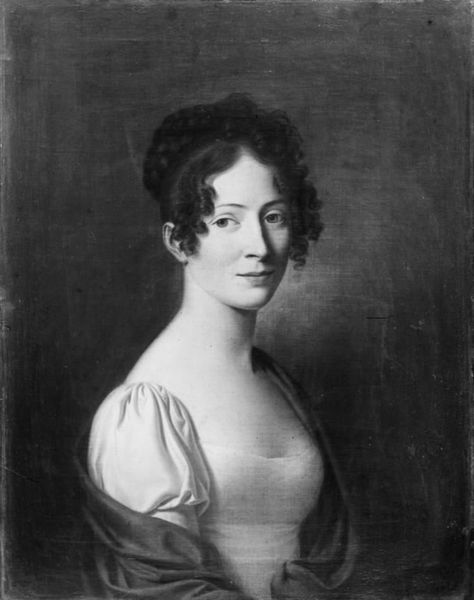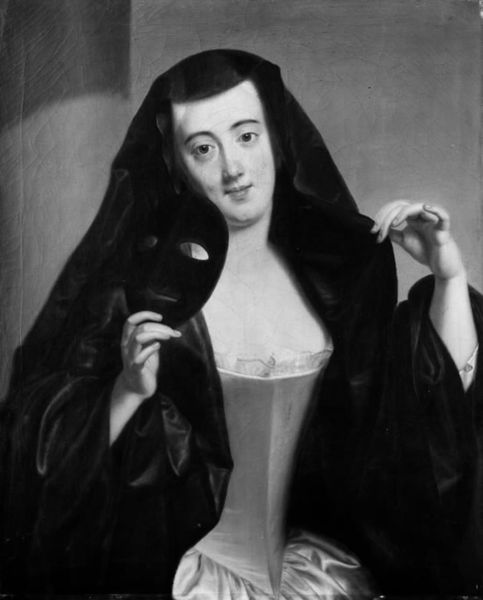
Emma Nansen, f. Schlegel, Jacob Nansens hustru 1825 - 1873
0:00
0:00
painting, canvas
#
portrait
#
portrait
#
painting
#
canvas
#
romanticism
#
realism
Dimensions: 28 cm (height) x 22 cm (width) (Netto)
Curator: Let's take a closer look at this piece by Wilhelm Marstrand, "Emma Nansen, f. Schlegel, Jacob Nansens hustru," painted sometime between 1825 and 1873. It's currently housed here at the SMK, the National Gallery of Denmark. Editor: The painting strikes me immediately with its stillness. The woman’s gaze is direct, but her expression holds a subtle melancholic quality. The stark tonal range further enhances this contemplative mood. Curator: Indeed. Emma Nansen, depicted here, wasn’t merely Jacob Nansen's wife; she embodied the restrained societal expectations of women of her time. The very title confines her identity within marital bounds, reflective of limited roles accessible to women during this period. Editor: Focusing on Marstrand’s technique, observe how he utilizes light and shadow to sculpt Emma's face. Notice how her dress is so very geometrical, accentuating the controlled environment. The formal rigidity underscores her place as a subject of social convention more so than free expression. Curator: This portrait resonates with prevailing romanticism; however, traces of realism remind us of social constraint within this era. Her posture mirrors demure virtue, even as tiny flourishes from her dress could signal self-expression suppressed by cultural and gendered expectations. Editor: Speaking of technique, it looks as though he layered the paint carefully, specifically for highlights across the face, and for bringing definition to the draped fabric across her shoulders. Marstrand used painterly techniques that elevate detail where her presence is emphasized, but it almost makes me wonder if the dark tones, where they converge with shadow, serve only to push her face forward for visibility within this context. Curator: These portraits served not only an aesthetic purpose; also acted as social scripts defining womanhood. Emma becomes representation in a patriarchal narrative wherein artists actively or passively legitimized gendered norms during Denmark’s social framework back then. Editor: The structural balance is undeniable, even across generations. Regardless of our vantage point, and what this portrait is designed to communicate or signify socially or personally, structurally it succeeds by creating harmony throughout form—the subject’s presence balances her contextual constraints while being, equally, the subject herself within them too. Curator: So, while examining art like “Emma Nansen” provides us not merely appreciation toward aesthetics and craftsmanship--further serves examination how artistry mirrors within cultural beliefs and power dynamics of certain eras influencing both individual perceptions concerning one’s societal framework also expression through artistry itself simultaneously! Editor: Ultimately, for me, this quiet yet impactful visual statement transcends a historic account--stands testament toward aesthetic arrangement being profoundly revealing unto emotional human truth contained solely at initial viewing based off carefully implemented details, structural harmonies alone through which such feeling might flourish.
Comments
No comments
Be the first to comment and join the conversation on the ultimate creative platform.
